Knowledge is Power When it Comes to Saving Forests
Do you like the woods? If you are reading this, the chances are high that you do. What you probably don’t know is that many of our forests in-and-around URDL are dying. It is our job to stop that from happening.
To explain this reality, I will use the backdrop of Greengate Easements by Quarry Lake in Pikesville. This perplexing NeighborSpace property is made up of 21 acres of noncontiguous land spread throughout the Greengate Community (shown below).
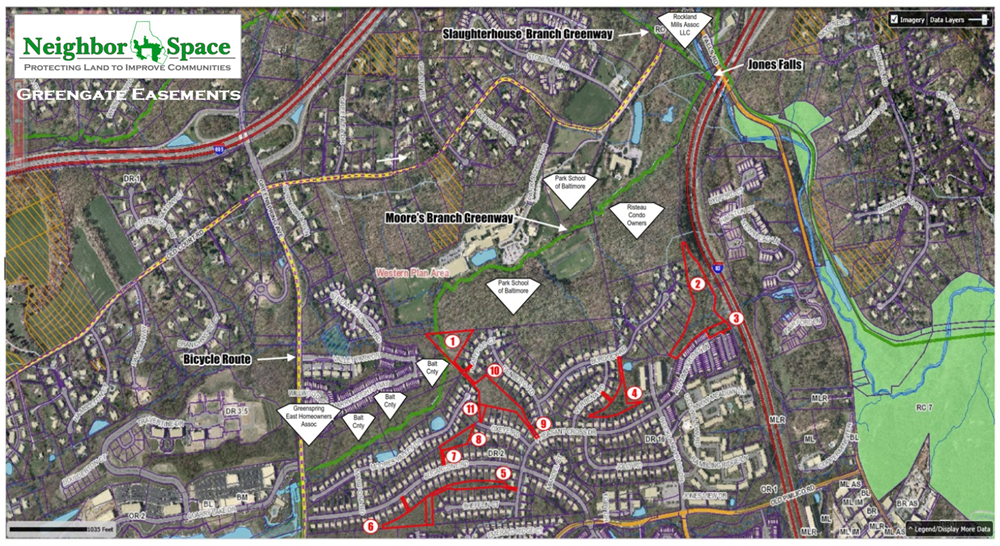
These 21 acres of forested land are conservation easements protected in perpetuity by NeighborSpace. That should mean these forests are safe, right? Knowing the topic of this article, you can guess that they are not.
While we can protect these forests from direct external threats such as developers and residents who would and attempt to build on these sites, protecting these forests from internal threats and the situations that create them is much more difficult.
If you have not heard it before, a key fact about forests is that generally, the bigger they are, the better they are at protecting themselves from threats. When we fragment forests, we make them incredibly vulnerable. So vulnerable in fact, smaller fragments cannot sustain themselves without human intervention. Greengate Easements falls into this category.
As we have seen with all of our sites, forest fragments tend to be overrun by invasive plants from Europe and Asia that have been brought into our yards as ornamentals. Greengate Easements has an assortment of invasives including an incredibly problematic bamboo patch. The most widespread invasive, however, is pachysandra, which has run amok on a number of properties taking up acres of land and providing little ecological value.
Interestingly enough, the invasive problem is not the main factor killing these forests. The killer in question, is in fact, white-tailed deer. With no natural predators and their land being overtaken by new development, deer are increasingly pushed to smaller and smaller forest fragments incapable of handling their numbers.
Not only will deer devastate a vulnerable forest by eating most native groundcover, shrubs, and young trees., but male deer will also kill young trees during rutting season by rubbing their antlers on them. Beyond that, deer rarely eat invasive plants giving a further competitive advantage to the aforementioned pachysandra and bamboo. The result is a thinned-out forest with relatively no young trees, no shrubs, and a groundcover made up almost entirely of invasives. Every time an old tree falls down, there is no smaller tree to replace it.
Fortunately, NeighborSpace is here to help. Supplied with plants from Native Landscaper, Victor Bennett, NeighborSpace hosted a workshop with The Park School on May 5th (top) and a Habitat Restoration Event with the community on May 15th (bottom). These efforts allowed us to not only beautify the stream bank on Greengate Parcel 1, but to literally set the seeds to improve the ecological community in these woods.
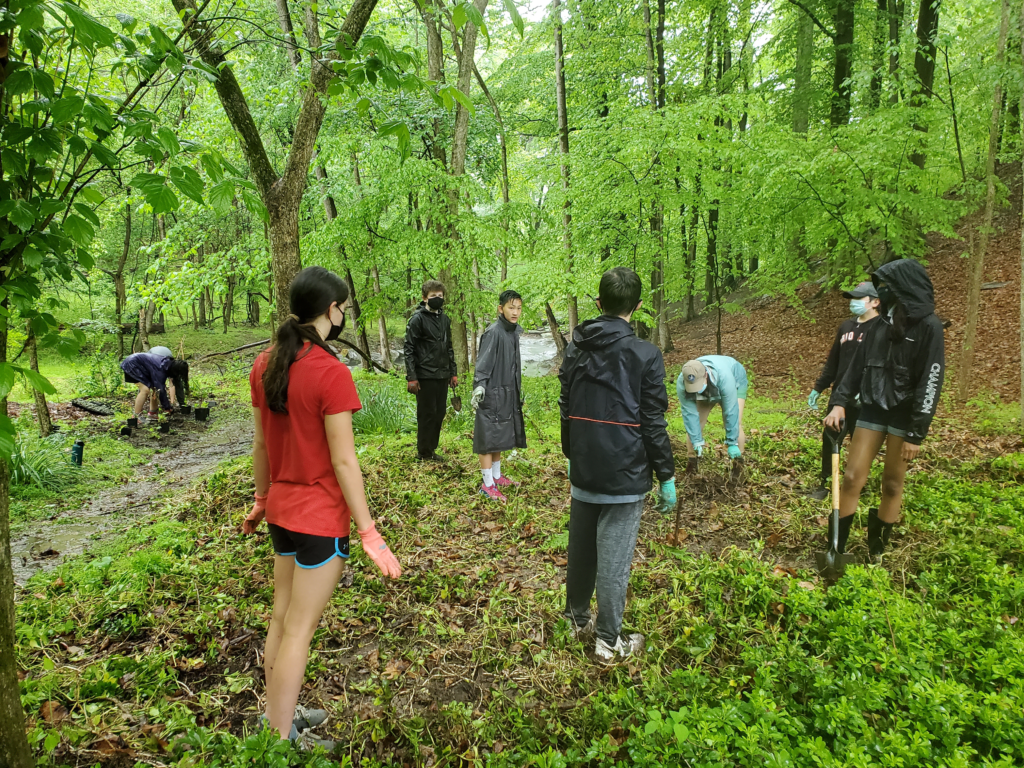
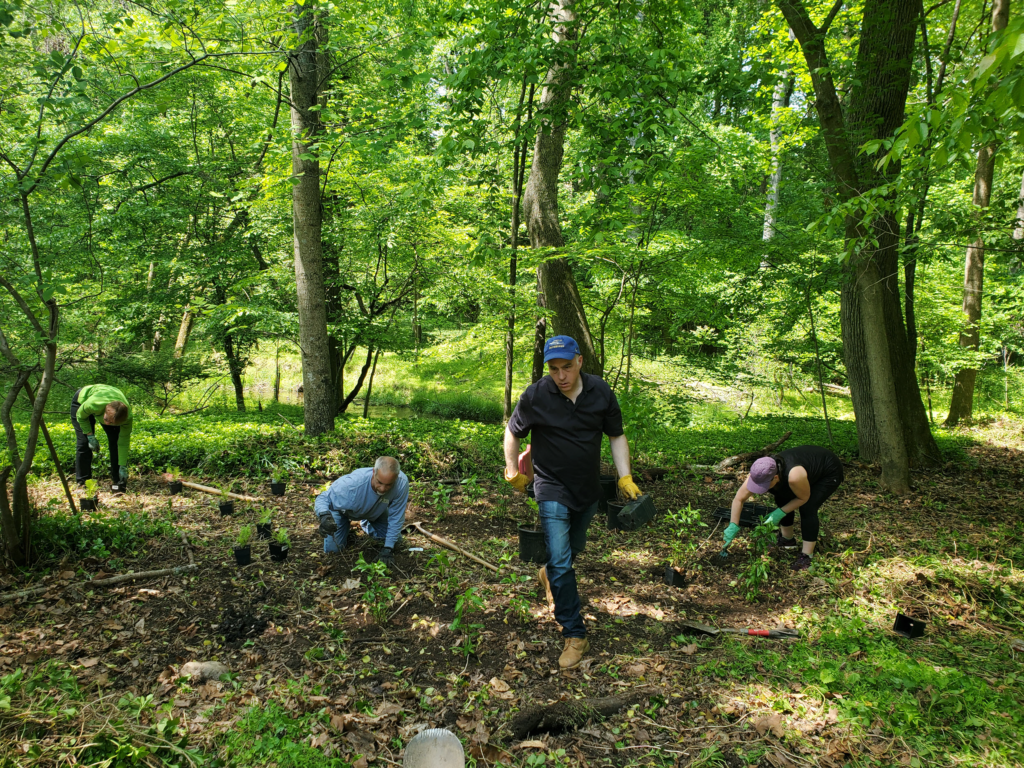
After removing invasive pachysandra and Japanese stiltgrass, our plantings (shown below) included:
- 100 plugs blue mistflower
- 100 plugs of blue-stemmed goldenrod
- 15 quarts blue mistflower
- 15 quarts of golden groundsel
- 12 quarts of late boneset
- 2 elderberry
- 2 Virginia summersweet
![]()
![]()
![]()
![]()
![]()
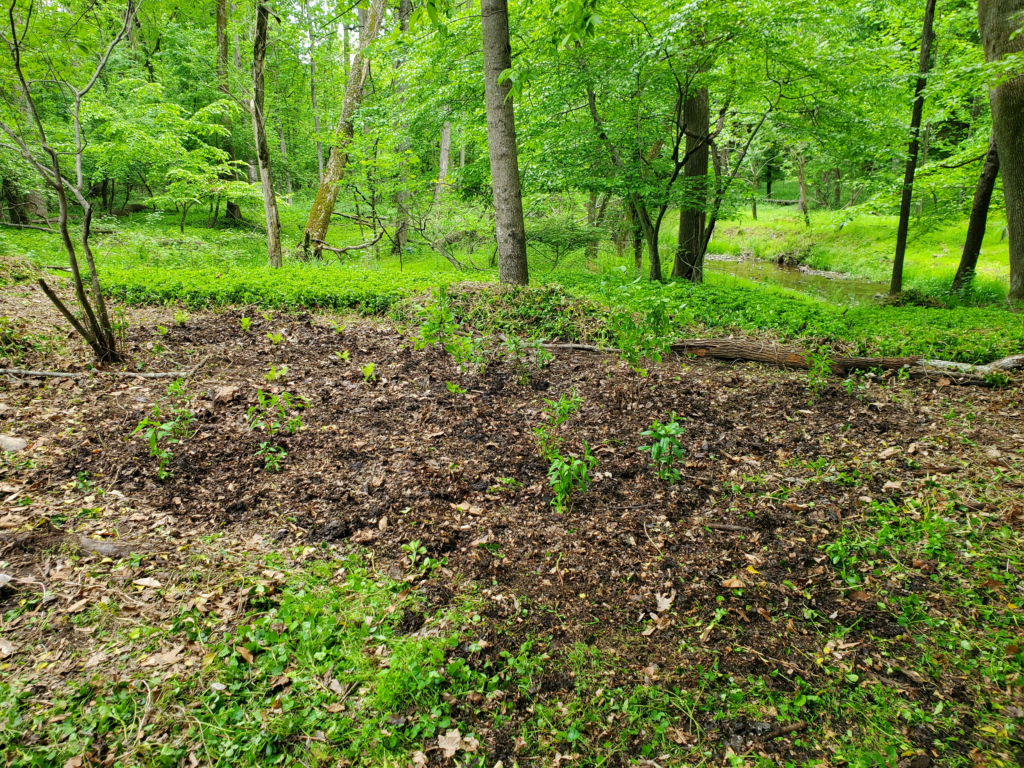
![]()
![]()
These plants will be monitored for disturbance by deer to gauge the difficulty of future plantings. Along with more plantings a potential next step is to use deer fencing to not only protect our plants but also to allow volunteer saplings to grow undisturbed. It is our job to do everything we can to maintain and restore healthy forest ecosystems using all tactics available. This is not an easy task, but a worthy one.
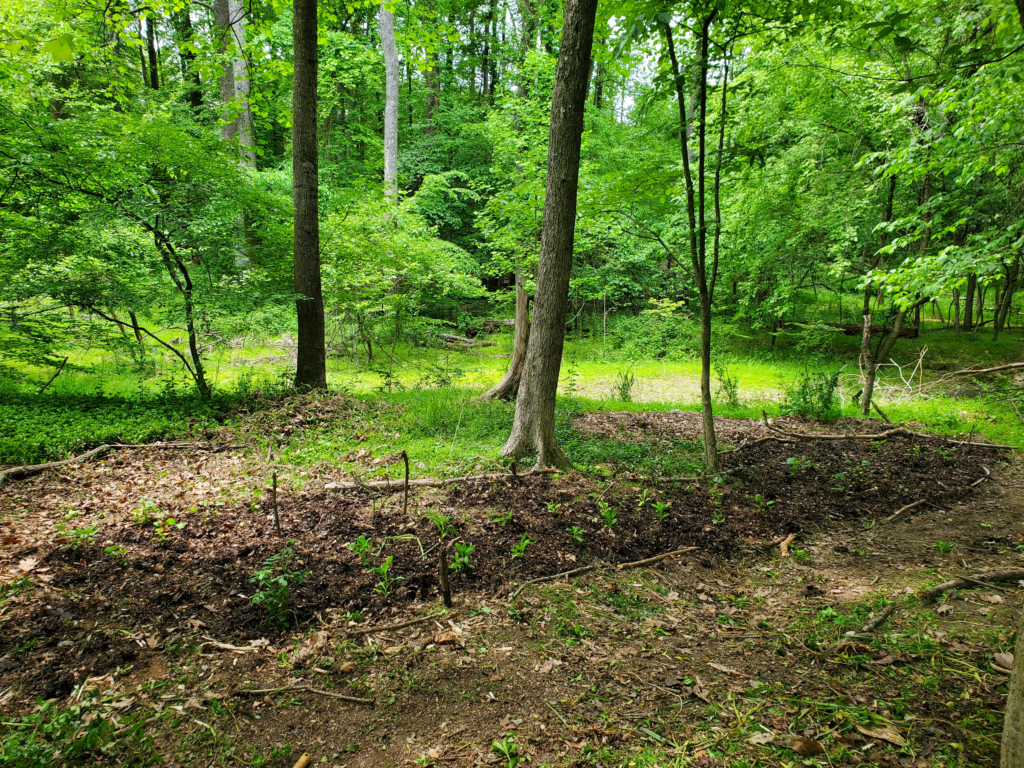
![]()
![]()